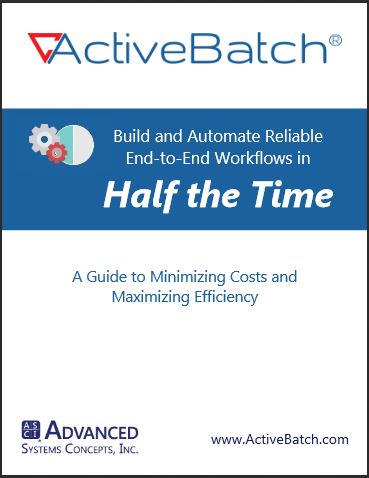Here’s Why Custom Scripting Just Isn’t Cutting It
With a modern Low-Code IT automation solution, IT teams are able to cut development time in half, saving resources and reducing costs.

Too Many Complex Scripts
Complexity is a common theme in the IT industry. Complex scripts and code on top of various applications and business processes are becoming too much to maintain manually. It takes a lot of time to sort through all of these complexities, and time is valuable and rare in today’s world.

Traditionally, IT organizations have relied heavily on custom scripting and manual processes to automate their IT environment. With legacy job schedulers or homegrown solutions, when a process needs to be automated, a developer must write a script, which involves researching how it can be built, writing the script, and then testing it before it can go into production. Even after the script is in production, oftentimes, the process will change or a new technology will be introduced, requiring that developer or another developer to update the script.
As IT environments grow more complex and processes become increasingly heterogeneous -spanning many different applications, technologies, and platforms- manual processes and custom scripting simply isn’t not cutting it.
For example, PrimeSource, one of the largest distributors of building materials in North America, was able to optimize its IT environment with workload automation. The manual process the IT team was running before ActiveBatch was very cumbersome and took several hours. When they put that process into ActiveBatch, PrimeSource was able to modularize the process and run things in parallel, which cut the processing time down from 9 ½ hours to just 1 hour.
Many IT teams are starting to learn that with a modern IT automation solution they are able to cut development time in half, saving them time and reducing costs. As a result, organizations can focus on innovation and higher level projects, leaving time-consuming repetitive projects to be automated.
A modern IT Automation solution is reliable and agile, ensuring that workflows are going to work consistently, every time. It simplifies workflow development with production-ready Job Steps that have the logic already built in, eliminating time that would otherwise be spent researching, writing, and testing scripts.








